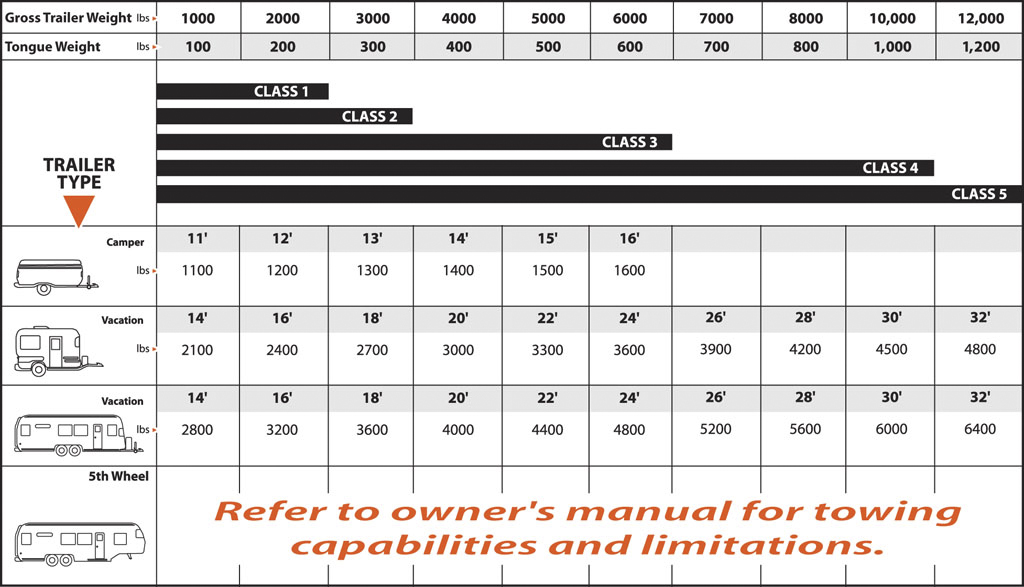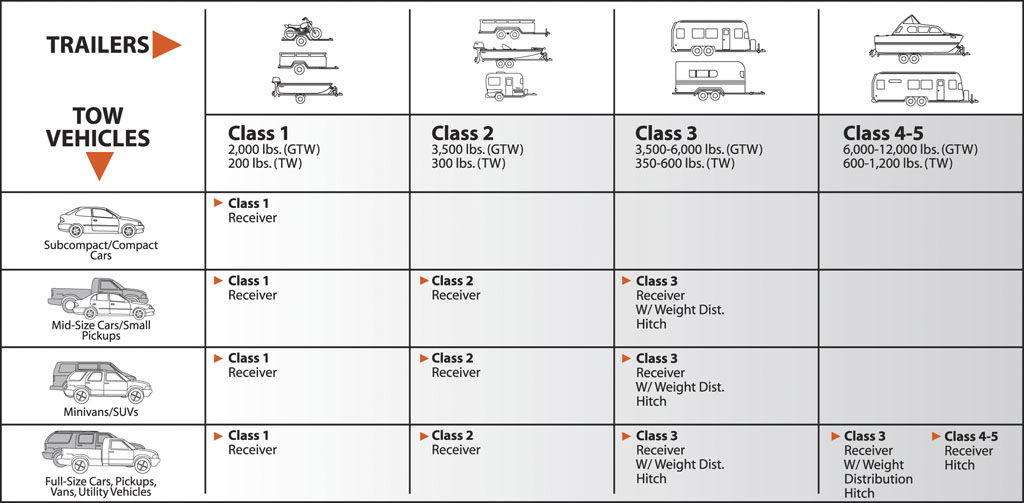Learn the Towing Basics
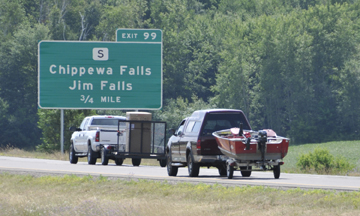 It
sounds easy – just hitch up and go – but there's a lot more to towing a trailer
safely down the road to your play or work destination. This page will help get you started, but for
more in-depth information, click on Hitches &
Towing 101 and go through all the chapter
titles.
It
sounds easy – just hitch up and go – but there's a lot more to towing a trailer
safely down the road to your play or work destination. This page will help get you started, but for
more in-depth information, click on Hitches &
Towing 101 and go through all the chapter
titles.
There are
a number of towing components to consider, but first you should dive into the
alphabet soup of tow ratings, and determine what your vehicle and trailer can
handle together. Whether you're pulling a fifth wheel, boat trailer, pop up
camper, or a utility trailer, the tow rating considers the size of a trailer or
towed vehicle, as well as its maximum loaded weight. Also check out the Quick
Reference Charts.
- GVWR - The Gross Vehicle Weight Rating is the maximum a vehicle can weigh, fully loaded with people and cargo.
- GCWR - The Gross Combined Weight Rating is the maximum the tow vehicle and a trailer together can weigh fully loaded.
 GTW
- The Gross Trailer Weight is the weight of the trailer and cargo. You can
measure this by putting the fully loaded trailer on a vehicle scale. You can
search online for a certified automated truck scale near you.
GTW
- The Gross Trailer Weight is the weight of the trailer and cargo. You can
measure this by putting the fully loaded trailer on a vehicle scale. You can
search online for a certified automated truck scale near you. TW
- The Tongue Weight is the amount of the trailer's weight that is placed on
the hitch ball by the trailer coupler. (To measure the tongue weight, use
either a commercial scale or a bathroom scale with the coupler at towing
height. When using a bathroom scale with heavier tongue weights, use the
method shown and multiply the scale reading by three.
TW
- The Tongue Weight is the amount of the trailer's weight that is placed on
the hitch ball by the trailer coupler. (To measure the tongue weight, use
either a commercial scale or a bathroom scale with the coupler at towing
height. When using a bathroom scale with heavier tongue weights, use the
method shown and multiply the scale reading by three.
These ratings consider multiple factors, including a vehicle's suspension, frame, and location of the rear axle in relation to the front end. For example, if your truck is rated for 10,000 pounds and you try to tow 15,000 pounds, the additional weight can overtax the rear suspension to the point that you reduce the traction and stability of your front tires. Always refer to your vehicle manual for information about its capabilities and limitations. Check out the quick reference chart below for more information. Remember, the chart illustrated below is only a guide. Make sure you find out the exact towing capacity of both your tow vehicle and your trailer, including all contents and cargo - AND DON'T OVERLOAD.
After you have determined how much weight you will be towing and how much
weight your tow vehicle can handle - your next step is choosing the right hitch.
The trailer towing industry has developed a classification system - that
differentiates hitches according to the amount of weight they can tow. Check out
the Hitch Selection Guide diagram below for quick reference. For more
information read Types of
Hitches.
The four most common types of hitches are:
 Receiver-style
Hitches
Receiver-style
Hitches
Receiver-style hitches are attached under the tow vehicle (usually frame-mounted) and are designed to carry the weight of the trailer (GTW) through the tongue weight of the trailer (TW). The amount of tongue weight that is carried on the hitch ball and ball mount (attached to the receiver hitch with a pin and clip) is roughly calculated to be between 10%-15% of the GTW. For example, a trailer weighing 2,000 GTW will usually have a tongue weight of between 200-300 lbs. It is this tongue weight that is carried directly on the ball/ball mount. Keep in mind that the TW only accounts for part of the weight rating scheme. You should never tow more that what your hitch and/or vehicle is rated for regardless of the circumstances. Some receiver-style hitches, i.e. 2" receivers, have two gross weight ratings. One for weight carrying and another for weight distribution.- Weight Distributing Hitch (or load equalizer)
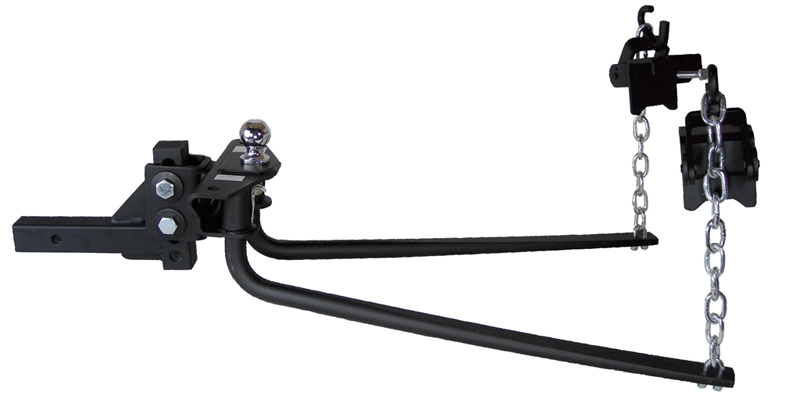
- Weight distributing hitches are used in conjunction with with a receiver hitch and special parts that distribute the tongue weight among all tow vehicle and trailer axles. The use of the weight distributing hitch will often lend itself toward higher capacity ratings for the trailer hitches themselves. That said, never tow more than either vehcile is rated for. Remember, weight distribution hitches can help with sway problems a little bit but to elimniate sway, you must purchase a sway control.
- Fifth Wheel Hitch (5th Wheel)
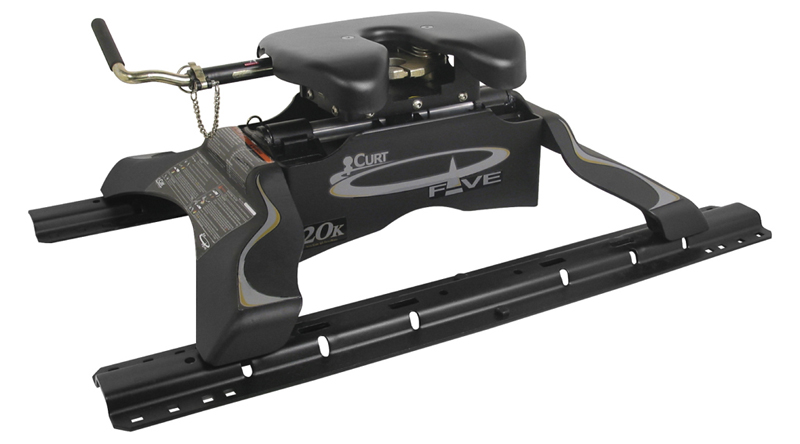
- Affords more towing capacity than traditional receiver-style weight distributing hitches. Designed for mounting the trailer connection point in a pickup truck bed, with a kingpin.
- Gooseneck Hitch
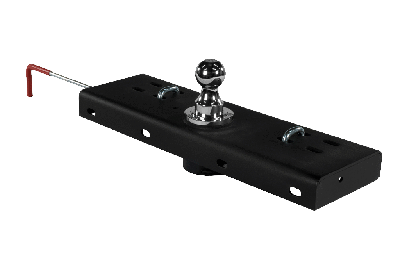
- Affords more towing capacity than traditional receiver-style weight distributing hitches. Designed for mounting the trailer connection point in a pickup truck bed, with a ball and coupler.
For receiver hitch towing, there are several essential towing
components that complete the package; such as the ball mount, hitch ball,
coupler, safety chains, wiring, brake controls, hitch pin/lock and sway control.
Whether you tow an RV, camper, boat, horses, a race car, snowmobiles,
motorcycles, dirt bikes or personal watercraft, you'll want to customize your
towing experience with a variety of accessories such as cargo and bike carriers,
winches, tie downs and ball covers just to name a few.
Once you've put
together and installed your complete tow package you'll want to learn more about
Towing
Safety before you hit the
road.





